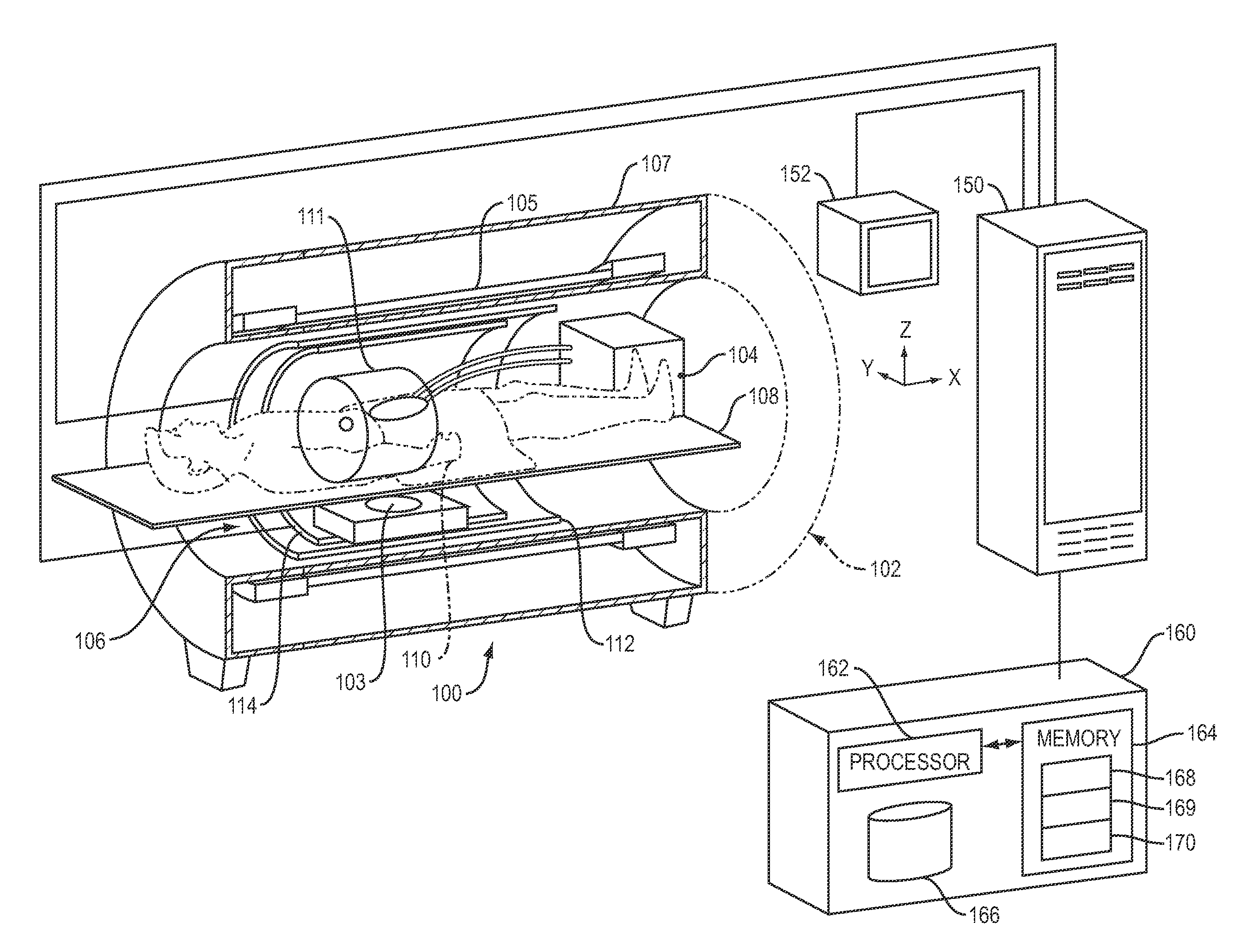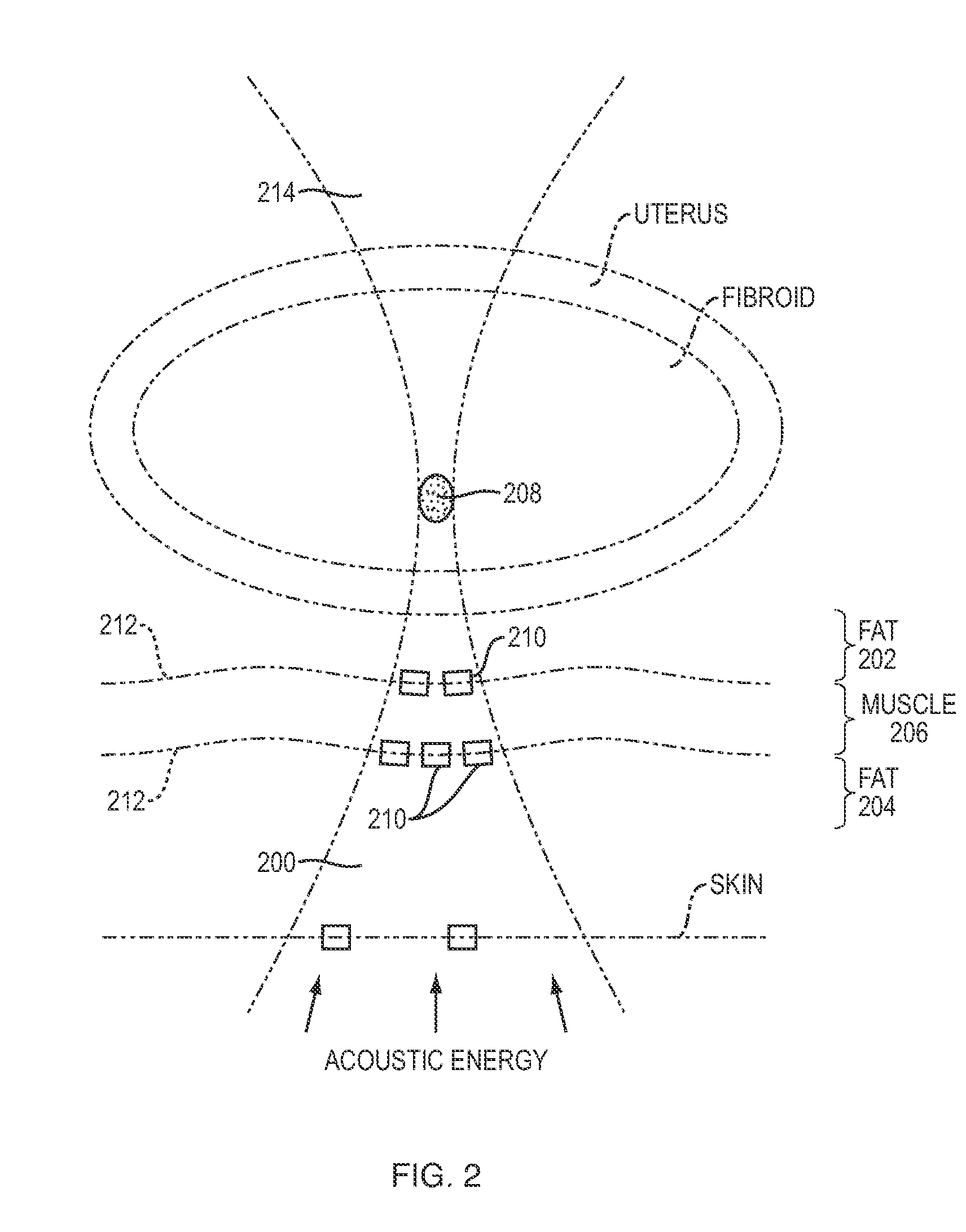Magnetic resonance thermometry using prf spectroscopy
a magnetic resonance and thermometry technology, applied in the field of magnetic resonance thermometry, can solve the problems of compromising the accuracy of temperature determinations based on prf changes, affecting the accuracy of temperature determinations, and sensitive to rapid anatomical phase, so as to achieve the effect of minimizing the error
- Summary
- Abstract
- Description
- Claims
- Application Information
AI Technical Summary
Benefits of technology
Problems solved by technology
Method used
Image
Examples
Embodiment Construction
[0024]MRI systems in which the techniques described herein may be implemented are well-known in the art; an exemplary system is shown in FIG. 1. The illustrated system 100 comprises an MRI machine 102 and, when an MR-guided thermal procedure is being performed, a thermal therapy device 103 that may be disposed within the bore of the MRI machine 102. The thermal therapy device 103 may be, for example, an ultrasound transducer, an RF or microwave ablation device, a laser, or any other device adapted to heat a target tissue, and may be configured either for placement outside the patient or for insertion into the patient's body. A controller associated with the thermal treatment device 103 may drive the device in accordance with a treatment protocol and / or based MRI data obtained during the treatment procedure. The system 100 may further include an apparatus 104 for actively cooling healthy tissue near the target tissue to avoid damage due to incidental overheating. The cooling apparatu...
PUM
 Login to View More
Login to View More Abstract
Description
Claims
Application Information
 Login to View More
Login to View More - R&D
- Intellectual Property
- Life Sciences
- Materials
- Tech Scout
- Unparalleled Data Quality
- Higher Quality Content
- 60% Fewer Hallucinations
Browse by: Latest US Patents, China's latest patents, Technical Efficacy Thesaurus, Application Domain, Technology Topic, Popular Technical Reports.
© 2025 PatSnap. All rights reserved.Legal|Privacy policy|Modern Slavery Act Transparency Statement|Sitemap|About US| Contact US: help@patsnap.com



